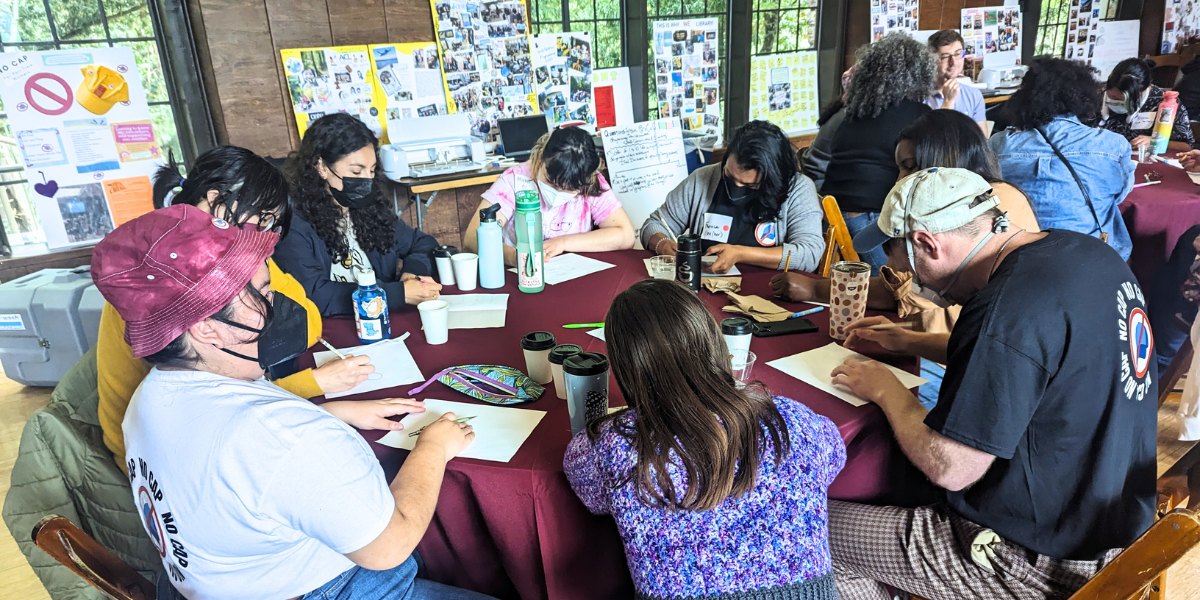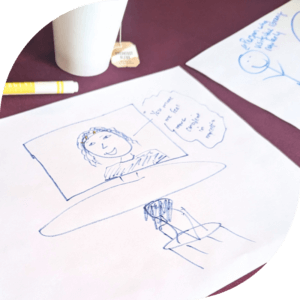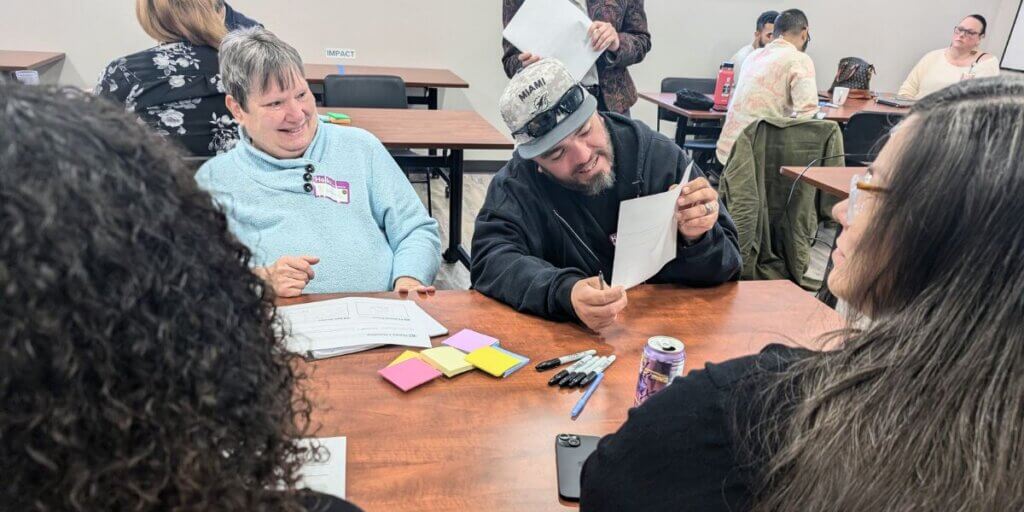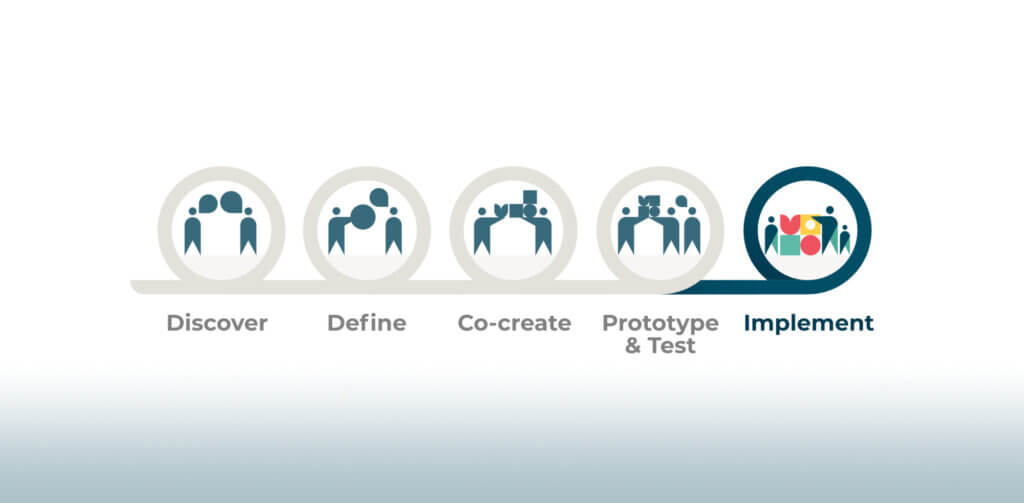Berkeley Public Library: All-Staff Day
Working to infuse learning, team-building and FUN into an all-staff day with the Berkeley Public Library

Berkeley Public Library’s team hosted a All-Staff Day in September, 2023 that they wanted to be rooted in Human-Centered Design (HCD). The emphasis was on promoting collaboration and co-creation among a group of approximately 100 people who typically work in separate roles and/or departments.
We worked with Berkeley Public Library to design and facilitate this event that would incorporate learning, team building and, perhaps most importantly, FUN! The goal was to facilitate an experience for participants that was enjoyable, engaging, low-stress, and generative. The opportunities for team bonding and professional development were intended to be steeped in HCD principles.
Starting with Design Principles
Our team first started co-designing with a team that we were calling the ‘party-planning committee’ which included a cross-section of employees, by sourcing from them what sort of event they wanted to design. We asked this simple question, and turned the responses into Design Principles that would guide the development of the day. We asked the committed to share one word to describe what they hoped the day would bring. Here were there responses:
- Unity
- Understanding
- Community
- Movement
- Engagement
- Refreshing
- Exploratory
With these simple one-word descriptions, we mapped activities that could be carried out during the day to each word, in order to bring these words to life. This allowed for us to have a framework from which we could design the day, which served as Design Principles.
Co-Design in Action
Our team took the Design Principles and aligned them with activities that would support a fun, engaging and generative experience, with lots of team building built in. For ‘Unity’ we chose an exercise called Pride in Your Work. This exercise asked folks to sketch an example of when they made someone’s day in their day-to-day work. The invitation was to think about both customers and colleagues when reflecting on times when they knew they had made a difference in someone’s day. This activity helps get people in a creative space by encouraging them to sketch, as well as provides cross-functional teams to gain insight into what types of activities other individuals within different departments carry out on a daily basis.

For ‘Understanding’ we chose an activity called the Four Directions. This activity maps different ways of engaging with work into cardinal directions. The activity was adapted originally from the National School Reform Faculty, an organization that “empowers educators to create meaningful learning experiences for all, by collaborating effectively in reflective democratic communities that foster educational equity and social justice.” This describes different ways of working as: North – people who get things done, quickly and efficiently; South – people who don’t act until they know there is consensus and buy-in to do so; East – people who keep their eyes on the big picture; and West – people who have an attention to detail.
The activity also incorporates the principles of movement and engagement, as it asks folks to stand up and go to the direction in the room that maps to their dominant working style. Of course, individuals have many ways of working, but for the purposes of the activity, participants are invited to reflect on where their natural energies lie.
Finally, for ‘Community’ and ‘Exploratory’ we introduced a tool that we often use in our Human-Centered Design practice: Service Touchpoint Mapping. This invited each library branch to map the customer experience of a core service offering: storytime!
We created large poster boards for the branches to map the service of storytime according to the following considerations:
- Customer experience: what does the customer experience, step-by-step, when accessing storytime?
- Interactions/touchpoints: what are all the people, places, things and feelings a customer encounters during the service?
- Behind the scenes: what are the people, policies and systems that bring the service to life?

Key Takeaways
The branches learned that everyone contributes to bringing the core service of storytime to life! One branch shared: “it takes a village to raise a storytime!” This created greater empathy among the staff at all branches for everyone who contributes to this core service. It also created a greater understanding of what patrons of storytime encounter. One shared ‘ah-ha’ moment was around how many caretakers of children stick around after storytime to connect with each other. This gave staff the ability to think about how they might better support caretakers with more structure around the largely unstructured ending of each storytime.



